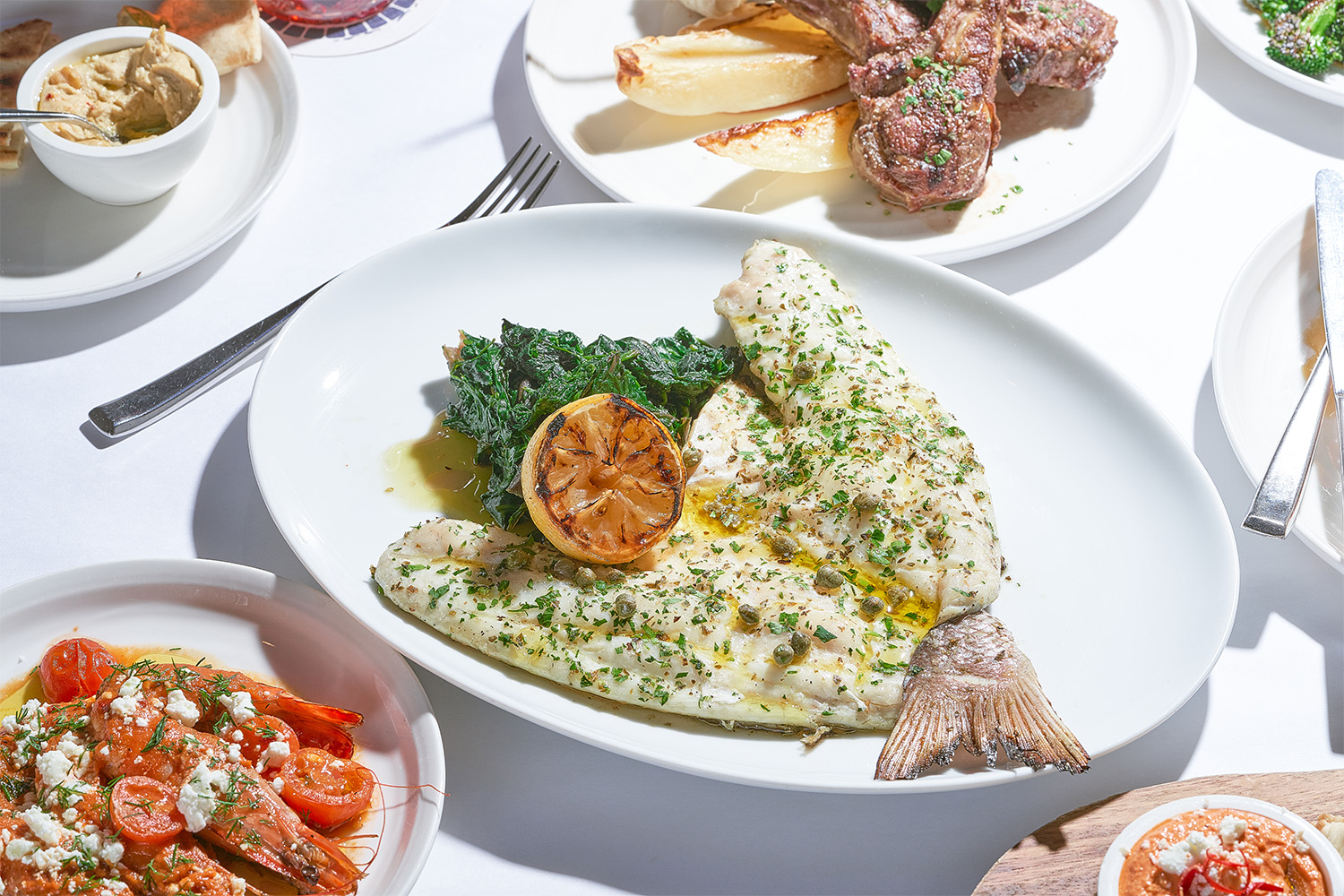For chef Jerry Goumroian, it’s high time Greek food outgrew its fast-casual image.
“I think a lot of times, when people think about Greek food, they think about diners,” he says. “That kind of greasy spoon: moussaka, pastitsio, flaming cheeses, and things like that.”
And he should know. Goumroian was raised by owners of such eateries, a background that inspired him to make his career in food. After graduating from the Culinary Institute of America, Goumroian returned to his hometown of Las Vegas – not just to work in such prestigious kitchens as Guy Savoy’s, but also to launch his own Great Greek Grill, an unassuming spot that boasted counter service and honest fare – the souvlaki and gyros he claims are forever associated with the cuisine of his ancestors.
It seems only natural to see the two sides of his culinary journey combined with his current post alongside chefs Michael Mina and Adam Sobel at their high-end Greek venture, Estiatorio Ornos. “There’s just an incredible history behind Greek food,” he continues. “We’re just kind of trying to educate, and say, ‘We’re more than just a gyro and souvlaki. Greek food is more than just that.’”
The focus is on Greece’s coastal cuisine – a part of the cooking that Goumroian defines as “very simply: preparation of beautiful fish. You just kind of let the product speak for itself.”
Such is the inspiration behind his sea bass dish, served with capers and a lemony Greek sauce known as latholemono: a combination of fresh-squeezed lemon juice, excellent olive oil, and a mix of fresh and dried herbs that, according to the chef, can accompany not just fish and shellfish but also grilled meats and vegetables.
“It is a very versatile sauce that brightens up the protein with the acidity from the lemons and the peppery fruitiness from the oil,” he says.
While Goumroian notes that wild oregano is the choice of herb in Greece, he opts here for Bona Furtuna dried basil, which hails from an organic estate in Sicily.
“I also love to add different fresh herbs as well, like oregano, basil, dill, tarragon, mint, or coriander, according to what protein is being prepared,” says the chef.
In this case, that protein is Mediterranean sea bass. Often known as branzino in the U.S. thanks to Italian influence, Mediterranean sea bass boasts a sweet, mild flavor and a flaky texture.
The dish bears the zing of salt-cured capers, which act as both seasoning and garnish. It’s perhaps no wonder, then, that Goumroian offers no specificity when it comes to their measurement – like salt, they should be used to taste.
One thing that definitely matters? Their provenance. Ornos’ Executive Chef Nikolaos Georgousis notes that the kitchen team prefers Santorini capers, which have a phenomenal depth of flavor thanks to the unique soil of the picturesque island.
“Santorini is a volcanic island,” he says, “so everything that grows is specific to the soil and the weather. Capers are one of the most important ingredients that this island produces, and as well as other stuff like tomatoes and grapes, but the point here is that everything is tasty because of the soil of the volcano. So that’s what makes them special.”
It’s also the perfect way to bring a little taste of Greece to Miami.
Grilled Mediterranean Sea Bass with Latholemono
For the lemon citronette “latholemono”
- ¼ cup fresh squeezed lemon juice
- ¾ cup extra-virgin olive oil
- 1 teaspoon sea salt
- 1 teaspoon dried basil
- 1 tablespoon chopped flat-leaf parsley
- 1 tablespoon minced chives
- Pinch of freshly ground black pepper
For the sea bass
- One whole Mediterranean sea bass, butterflied
- Olive oil
- Sea salt
- Salt-cured capers, to taste
Method
First, rinse the capers well and let them sit in cold water for 30 minutes. Rinse and repeat.
While the capers are soaking, make the latholemono. Dissolve the salt in the lemon juice, then add the rest of ingredients and mix with spoon to form a lightly emulsified sauce.
Pat the fish skin dry with paper towel, then brush very lightly with olive oil and season with salt. Place the fish skin side-down on a hot grill. (It will cook on the skin side for 90% of cooking process.) Once the flesh becomes opaque and the skin is crispy, flip the fish over and finish cooking on flesh side.
Place the fish on a warm plate and place a few capers on top. Mix the latholemono well before pouring it over the top and serving.
This article appeared in an InsideHook newsletter. Sign up for free to get more on travel, wellness, style, drinking, and culture.
